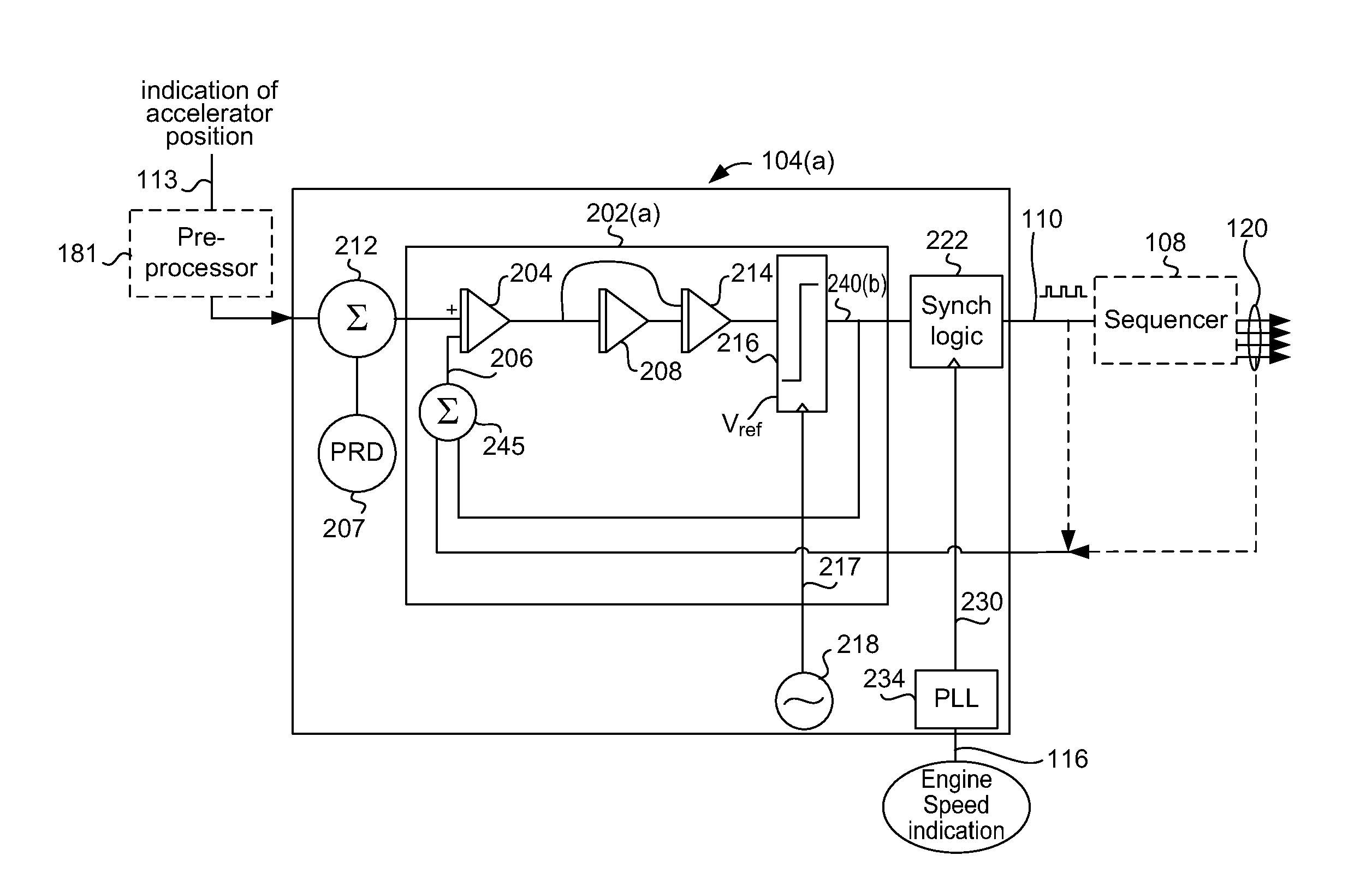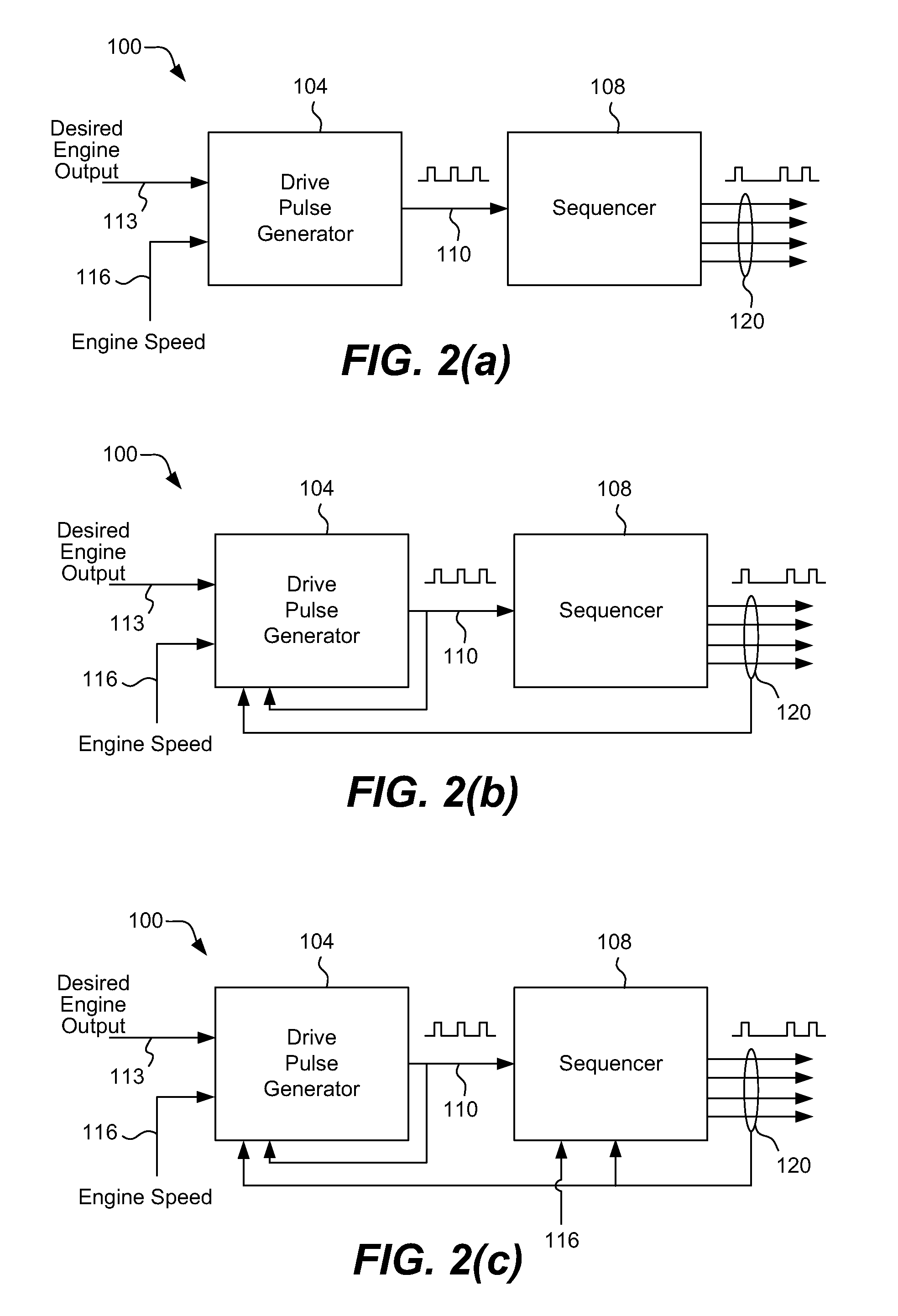Internal combustion engine control for improved fuel efficiency
a technology for internal combustion engines and fuel efficiency, applied in the direction of electric control, machines/engines, instruments, etc., can solve the problems of reducing the effective compression of the cylinder, internal combustion engines operate less efficiently at partial throttle, and deliver more power (and often far more power) than the effect of delivering power
Active Publication Date: 2011-08-25
TULA TECH INC
View PDF88 Cites 130 Cited by
- Summary
- Abstract
- Description
- Claims
- Application Information
AI Technical Summary
Benefits of technology
[0014]The described approaches can be used to significantly improve the fuel efficiency of a wide variety of internal combustion engines, including 2-stroke, 4-stroke and 6-stroke piston engines, rotary engines, hybrid engines,
Problems solved by technology
However, in engines that control the power output by using a throttle to regulate the flow of air into the cylinders (e.g., Otto cycle engines used in many passenger cars), operating at a substantially unthrottled position would typically result in the delivery of more power (and often far more power) than desired or appropriate.
There are a number of reasons that internal combustion engines do not operate as efficiently at partial throttle.
One of the most significant factors is that less air is provided to the cylinder at partial throttle than at full throttle which reduces the effective compression of the cylinder, which in turn reduces the thermodynamic efficiency of the cylinder.
Another very significant factor is that operating at partial throttle requires more energy to be expended to pump air into and out of the cylinders than is required when the cylinder is operating at full throttle—these losses are frequently referred to as pumping losses.
When a cylinder is “shut down”, its piston still reciprocates, however neither air nor fuel is delivered to the cylinder so the piston does not deliver any power during its power stroke.
Although the remaining cylinders tend to operate at improved efficiency, conventional variable displacement engines have a number of drawbacks that limit their overall efficiency.
One drawback of most commercially available variable displacement engines is that they tend to kick out of the variable displacem
Method used
the structure of the environmentally friendly knitted fabric provided by the present invention; figure 2 Flow chart of the yarn wrapping machine for environmentally friendly knitted fabrics and storage devices; image 3 Is the parameter map of the yarn covering machine
View moreImage
Smart Image Click on the blue labels to locate them in the text.
Smart ImageViewing Examples
Examples
Experimental program
Comparison scheme
Effect test
 Login to View More
Login to View More PUM
 Login to View More
Login to View More Abstract
A variety of methods and arrangements for improving the fuel efficiency of internal combustion engines are described. Generally, an engine is controlled to operate in a skip fire variable displacement mode. In various embodiments, the appropriate firings are determined dynamically during operation of the engine on a firing opportunity by firing opportunity basis and/or without the use of predefined firing patterns.
Description
CROSS REFERENCE TO RELATED APPLICATIONS[0001]This application is a Divisional of U.S. patent application Ser. Nos. 13 / 004,839 and 13 / 004,844, both of which were filed on Jan. 11, 2011 and both of which claim priority of Provisional Application No. 61 / 294,077 filed Jan. 11, 2010 and are a Continuation-in-Part of U.S. patent application Ser. No. 12 / 501,345 filed Jul. 10, 2009, which is a Continuation-in-Part of U.S. patent application Ser. No. 12 / 355,725 filed Jan. 16, 2009 which claims the priority of U.S. Provisional Patent Application Nos. 61 / 080,192, filed Jul. 11, 2008; and 61 / 104,222, filed Oct. 9, 2008. Each of these priority applications is incorporated herein by reference and all are entitled: “INTERNAL COMBUSTION ENGINE CONTROL FOR IMPROVED FUEL EFFICIENCY.” This application is also related to U.S. Pat. Nos. 7,886,715, 7,577,511 and 7,849,835, which are incorporated herein by reference.FIELD OF THE INVENTION[0002]The present invention relates generally to internal combustion...
Claims
the structure of the environmentally friendly knitted fabric provided by the present invention; figure 2 Flow chart of the yarn wrapping machine for environmentally friendly knitted fabrics and storage devices; image 3 Is the parameter map of the yarn covering machine
Login to View More Application Information
Patent Timeline
 Login to View More
Login to View More IPC IPC(8): F02D28/00F02D17/02
CPCF02D17/02F02D37/02F02D41/0087F02D41/1401F02D41/1402F02D41/266Y02T10/142F02D2200/602F02D2250/18F02D2400/02F02P5/1512Y02T10/46F02D2041/2027Y02T10/12Y02T10/40
Inventor TRIPATHI, ADYA S.SILVESTRI, CHESTER J.
Owner TULA TECH INC
Features
- R&D
- Intellectual Property
- Life Sciences
- Materials
- Tech Scout
Why Patsnap Eureka
- Unparalleled Data Quality
- Higher Quality Content
- 60% Fewer Hallucinations
Social media
Patsnap Eureka Blog
Learn More Browse by: Latest US Patents, China's latest patents, Technical Efficacy Thesaurus, Application Domain, Technology Topic, Popular Technical Reports.
© 2025 PatSnap. All rights reserved.Legal|Privacy policy|Modern Slavery Act Transparency Statement|Sitemap|About US| Contact US: help@patsnap.com



